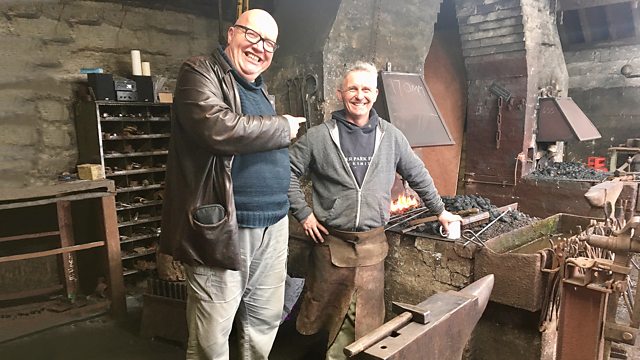Sussex Weald Ironworking
Ian Marchant visits the Sussex Weald, once the epicentre of the international arms trade, because of its ironstone reserves. What remains of this industrial landscape?
Ian Marchant visits the Sussex Weald, once the epicentre of the international arms trade, owing to its ironstone reserves and subsequent iron-making expertise. It's a personal story too: 'Marchant' is one of the Sussex names associated with metal-working migrants from Belgium in the late 15th century.
Hammer and furnace ponds and former forges are now dotted about the landscape, rich habitat for wildlife, according to naturalist Richard Jones. A walk on the Weald is a treasure hunt for history-of-iron enthusiasts (of whom there are an unusual number in Sussex). They frequently come across previously undiscovered remains, some dating back to medieval times.
Ian takes a walk at Newbridge with Jeremy Hodgkinson and Roger Prus, who can interpret the bumps in the woodland that most people would pass without noticing. They might be old furnace sites or even remains of buildings used by iron workers.
He meets Emma O'Connor to explore the Anne of Cleves House collection of iron artefacts in Lewes. These range from items with military uses to all kinds of domestic and industrial products, most of which are beautifully preserved and attest to our ancestors' habits of recycling, repairing and preserving the things they owned.
Ian visits Glynde Forge, where blacksmith Ricky Delaney demonstrates the living craft of working with metal in Sussex. Will Ian discover that forging metal is in his blood?
Producer...Mary Ward-Lowery
Last on
More episodes
Previous
Broadcasts
- Thu 2 May 2019 15:00成人快手 Radio 4
- Sat 4 May 2019 06:07成人快手 Radio 4
Podcast
-
![]()
Open Country
Countryside magazine featuring the people and wildlife that shape the landscape of Britain


